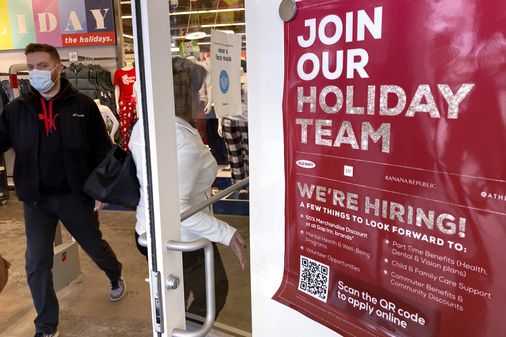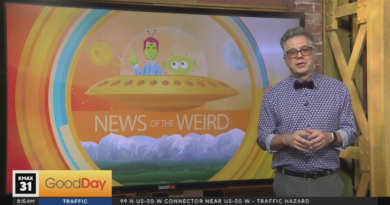A ‘weird’ jobs report that’s good news nonetheless – The Boston Globe
Jason Furman, a Harvard economist and former chairman of the Council of Economic Advisers, has analyzed countless monthly employment reports over the years.
His first reaction to the latest update from the US Labor Department?
“Weird jobs numbers,” he tweeted just minutes after the news hit on Friday morning.
Weird, indeed.
Released against the backdrop of rising consumer prices and growing concerns about yet another surge in COVID cases, the November jobs data presented conflicting views of the economy: Employers said they slowed hiring sharply from the previous month, while 1.1 million people, a big number, said they joined the ranks of the employed.
Advertisement
The view of Furman and most other pros is that the report — which is based on separate surveys of employers and households — shows unemployment moving quickly toward pre-pandemic levels, making it tough for businesses to fill more than 10 million job openings.
“When you step back, it’s a pretty solid report,” said Chris Varvares, co-head of US economics at IHS Markit.
Employers added 210,000 jobs last month, the weakest number since last December, when payrolls shrank. But the unemployment rate fell to 4.2 percent from 4.6 percent in October, the lowest it’s been since the start of the pandemic, when it stood at 3.5 percent.
Even with demand for workers exceeding supply, the economy is picking up speed from the summer, when the Delta variant, along with related supply chain constraints, took a bite out of growth. The wild card, of course, is Omicron, the new contender for the variant crown, and whether it proves to be as disruptive as Delta was.
A disconnect between the employer and household surveys isn’t unheard of, though what emerged in November is unusually extreme, economists said. The gap will probably narrow as the Labor Department goes through its normal revision process in coming months, they said.
Advertisement
Meanwhile, the disappointing increase in payrolls wasn’t as bad as it looked.
The Labor Department revised the gains for September and October higher by 82,000. Over the past three months, employers added an average of 378,000 jobs, which in pre-pandemic days would be considered healthy.
Jobs gains last month were driven by sectors that have fared relatively better since the onset of COVID: professional and business services, up 90,000; transportation and warehousing, up 50,000; and construction and manufacturing, each up 31,000.
Hiring in harder-hit consumer-facing sectors was softer. Leisure and hospitality added 23,000 jobs, down from a gain of 170,000 in October. The government sector declined by 25,000 jobs, with about half the losses coming from local education, while retailers cut 20,000 positions.
The labor force grew by 594,000 workers, and the labor force participation rate — the percentage of the adult population working or looking for a job — edged up to 61.8 percent, the highest since March 2020.
Average hourly wages for all private sector employees rose 4.8 percent over last November, down by 0.1 percentage point from the October rate.
“Everything is pointing in the right direction from the point of view of what workers are actually experiencing,” said Alicia Sasser Modestino, an economist at Northeastern University.
The same can’t be said for investors. The Standard & Poor’s 500 index closed down 0.8 percent.
Advertisement
Wall Street, at the moment, is focused on inflation and the Federal Reserve’s effort to tame it by withdrawing money from the financial system through a process known as tapering.
Even after adding 6.1 million jobs this year, payrolls remain 3.9 million below the level of February 2020, a gap that is even larger when adjusting for population growth. Fed chairman Jerome Powell had hoped to keep credit easy in the hopes of getting more jobs filled.
But the spike in inflation — the Consumer Price Index was up 6.2 percent in October over the prior year, well above the Fed’s 2 percent target — forced Powell’s hand. The Fed has started tapering, and earlier this week Powell indicated that it might complete the job earlier than previously planned.
The next step, perhaps as early as the third quarter of 2022, would be to increase the central bank’s benchmark lending rate, which it has pegged at near zero since the coronavirus crisis began. Such a move would push up the cost of borrowing for businesses and consumers, including rates of credit cards and mortgages.
“No question that they will lean to tightening faster,” said Brian Bethune, an economist at Boston College.
Larry Edelman can be reached at larry.edelman@globe.com. Follow him on Twitter @GlobeNewsEd.
Digital Access
Home Delivery
Gift Subscriptions
Log In
Manage My Account
Customer Service
Help & FAQs
Staff List
Advertise
Newsletters
View the ePaper
Order Back Issues
News in Education
Search the Archives
Privacy Policy
Terms of Service
Terms of Purchase
Work at Boston Globe Media




